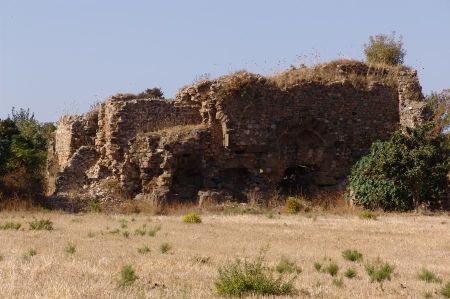The antique cities of Selinus and Trajan
The antique city of Selinus which is on the spot as today’s Gazipasa. was one of the important cities of mountainous Cilicia. With other cities in the same region, it shows that there was an intensive human settlement here during the antique times.
As some of the ruins on the coastline and historical evidence reaching modern times show, these port cities played an important role in the Mediterranean trade and they became rich.
Hacı Musa River that originates on the Taurus Mountains and flows into the sea near the marina on the Gazipaşa shore was bringing life to the plain in the old times as it does now. While we move towards the coast on the main road from Gazipaşa, we see on the right the ruins of the antique aqueduct that used to carry water to the city from the Toros Mountains. The main road passes under the aqueduct to reach the coastline. When you go left and pass the bridge over the Musa River and walk a little towards the castle that rises on the promontory jutting into the sea, you come face-to-face with the extant structures of the city of Selinus.
You do not even need a vehicle to reach the ruins. When you follow the coastline and reach the mouth of the river at the end of the marina, start walking in the opposite direction of the water flow and you will come across the remnants of the city. The city was founded by its namesake, King Selinus. Later it took on the name Selinti. The first thing to attract our attention is a monumental tomb. It is the cenotaph of Trajanus. Nobody is buried in this tomb, It is dedicated to the memory of Roman Emperor Trajanus who died here, in this city while he was returning to Rome after his Parthian expedition. The top floor of the tomb is a temple and the lower level is the cenotaph, a name given to tombs where no human remains have been buried. There is also another structure here built by the Seljuks apparently with material from an older Corinthian style building. It is likely that this Seljuk structure was used as a hunting pavilion.
